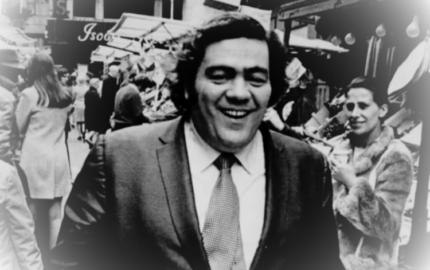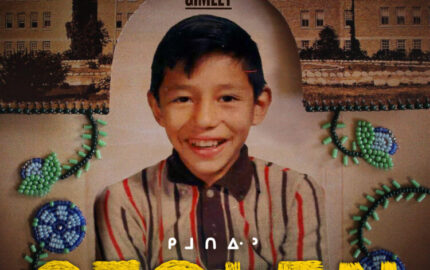Two AP reporters and an editor on three continents produced the story that we’ve chosen as our latest Notable Narrative. Kristen Gelineau (Sydney), Ravi Nessman (Delhi), and Mary Rajkumar (Miami; she’s the AP’s international enterprise editor) collaborated on the two-part saga of Saroo Brierley, who fell asleep on a train in India as a child, lost his family, was shipped to Australia for adoption and, 25 years later, tracked down his still-grieving mother, Fatima Munshi. The story is suspenseful and restrained, and ends realistically, and it wouldn’t have happened without Google Earth and Facebook. The reporters talked to us about the piece via email from their respective parts of the world, and because editors also deserve some love, we also checked in with Rajkumar.
Storyboard: Could you tell us about the genesis of this story?
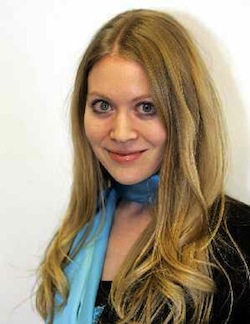
Gelineau: One of our colleagues in London actually saw a piece on the BBC about this miraculous mother-son reunion in India, and sent us an email about it. I fully admit to a healthy dose of skepticism when I first read the initial coverage of this story, and I think Ravi would agree that we approached it very cautiously in the beginning. It just seemed too fantastic to be true. But as we moved through the initial stages of reporting and the facts checked out, we got excited. We knew we had the potential for a great story on our hands. The trick, of course, was going to be approaching it differently than any other news organization.
Nessman: Kristen and I discussed it and we agreed that it was incredible – so incredible, in fact, we thought it might not be credible at all. We spent weeks going back and forth on whether it was even worth doing and whether we could believe Saroo’s tale of finding his long-lost mother using Google Earth. One thing that finally swayed us was when Kristen discovered his postings on the Khandwe Facebook page from a year ago trying to work out whether that was really his hometown or not. That just seemed too genuine.
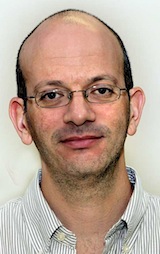
How did you report it?
Nessman: For my side, AP photographer Saurabh Das and I traveled to Khandwe in the state of Madhya Pradesh. I had initially organized one of the local villagers who spoke English (and was actually helping Saroo and his mom communicate) to help with translation. When it quickly became clear this was not working, Saurabh jumped in to help. We interviewed Fatima for one and a half very intense days. Her daughter Shakila was there as well, to give her side of the story. Neighbors and friends, who had witnessed Fatima’s search for her son, wandered in and confirmed her story as well as the reunion. The owner of the hotel where Saroo stayed confirmed it as well as people we ran into as we took a tour of sites from the story with Fatima.
Gelineau: Most of the stories that had been written on this were told solely from Saroo’s point of view; often, he was the only source. But we were curious about the other people connected to these events: particularly, his mother, Fatima. Because it was going to involve a lot of travel for Ravi to get out to Fatima’s home and interview her, we wanted to make sure we had Saroo’s story nailed down before he went anywhere. This proved a bit tougher than anticipated, as he now has an agent who okays or rejects all media requests to interview Saroo. Once I cleared that hurdle, I had to do all the reporting by phone due to the high cost of traveling to Tasmania. That definitely made things tougher. I always prefer to do in-person interviews, particularly on narratives where you need to get huge amounts of detail, and observation is so helpful in really getting a feel for who the person is. But I just did what I could with what I had, and thankfully was able to spend hours on the phone with Saroo, reconstructing his story piece by piece. Once I knew we would have enough for a full-blown narrative, Ravi made the big trek out to Ganesh Talai. I followed up by phone with Saroo with additional questions after Ravi came back.
It can be difficult, getting a subject to remember small details about a life experience, especially when the experience was traumatic and happened early. How did you approach the interviews?
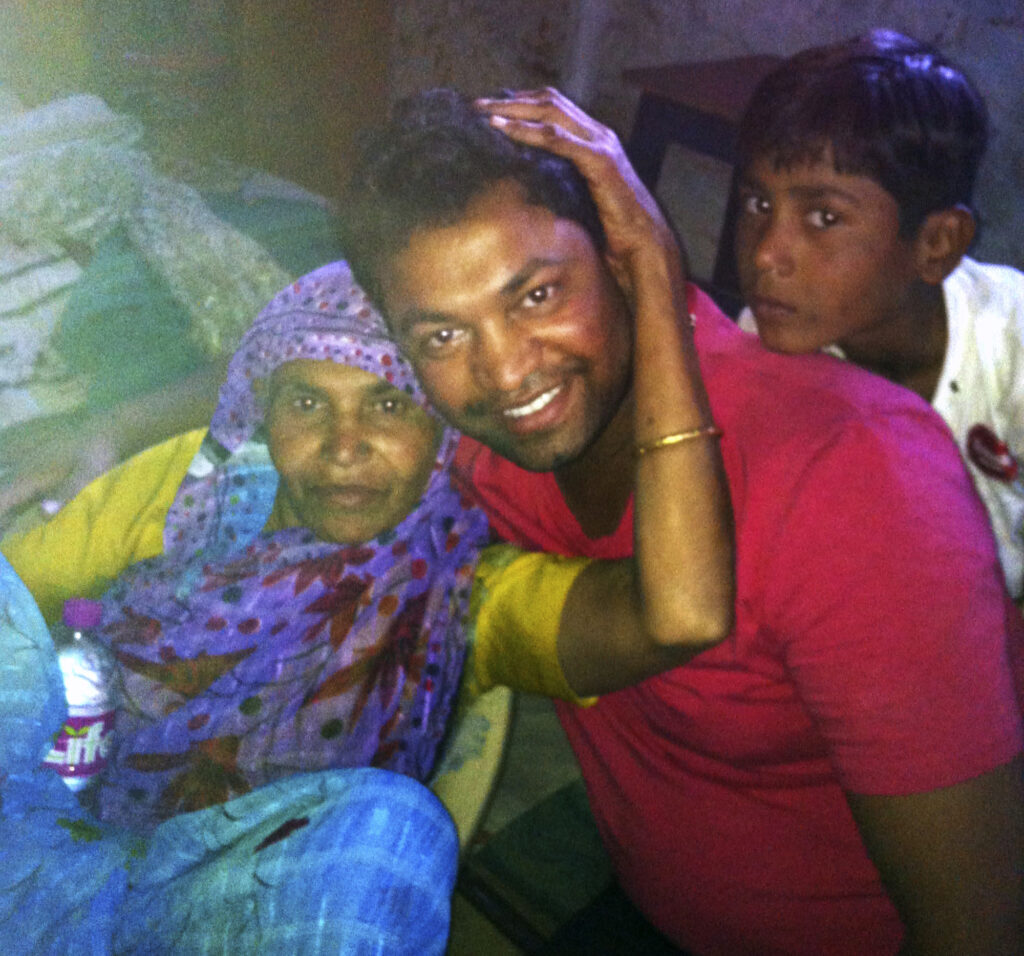
Gelineau: Saroo was kind of an ideal subject for a narrative, because his recall was so extraordinary. I think part of that is because it was so traumatic for him. Those kinds of experiences often burn themselves into people’s brains, and that was certainly the case for him. That said, the events in the first half of the article happened nearly 25 years ago, so there were obviously some things he just wasn’t going to remember. So I told him right away: “I’m going to ask you very specific questions that might sound irrelevant or weird, but I’m asking them because I’m trying to paint a picture of what happened to you. These details will help make your story real to the readers. But if you can’t remember something, that’s okay – just tell me you can’t remember and we’ll move along to the next question.” He really seemed to understand what I was saying, so when I asked him questions like, “Do you remember what the seat on the train felt like? Looked like? Were you sitting upright, or lying down when you fell asleep?” he didn’t think I was nuts. He just told me everything he could remember.
Nessman: This may have more relevance for Kristen, but I have found when interviewing residents of rural areas to extract these kinds of details requires extraordinary patience. We would ask Fatima the same question over again many times, sometimes hours apart, to see what different answers we would get. Often the more we asked it, the more detail would emerge. Sometimes, contradictions came out and we would pursue those until they could be resolved. One of the details that was the most emotive for me was her memory of billowing out her scarf to cover her tired, hungry children at night. She acted that out for us, and the tears in her eyes made it clear that that was a living memory for her.
What were the biggest challenges overall?
Nessman: Trying to reconcile the quarter-century-old memories of a 5-year-old boy and a distraught mother. For example, Fatima had ideas about what had happened on the train that were different than Saroo’s. In the end, we decided that Saroo, though just a child, was actually there and should be allowed to tell his version of the most traumatic event in his life.
Gelineau: For me, time constraints and time zones! We wanted to get the story out as quickly as we could, since it had already been reported and we were worried another news outlet might beat us with their own big, sweeping narrative. On top of that, both of us were about to go on leave (Ravi was going on holiday, and I was about to fly to the U.S. to get married). So after the reporting was done from both our sides, I think we only had about four or five days to actually write the piece – from different continents and time zones, while also juggling our daily news load. Lastly, our marvelous editor, Mary Rajkumar, is based in Miami. Ravi is in India. I am in Australia. You can imagine the difficulties of arranging conference calls on this one! But we managed to get it done in time, though I was definitely doing some last-minute edits at the airport.
Writing together can be fraught. How did you handle it logistically?
Gelineau: Before Ravi and I started writing, we settled on a basic outline, so we knew what scenes we were each responsible for, and which ones would be combined efforts. Essentially, all the scenes from Saroo’s point of view, I wrote, and all the scenes from Fatima’s point of view, Ravi wrote. Sydney is a few hours ahead of Delhi, so by the time Ravi got in to work on our first writing day, I pretty much had Saroo’s scenes in part one written. I sent them to Ravi so he’d know the approach I was taking, and he then wrote Fatima’s scenes. Then he sent the whole thing back to me, and we made a few structural changes. I cleaned up some of my scenes, Ravi made a few tweaks to his, and we were pretty much done. Part two was slightly trickier, as we had some scenes that were written from both Fatima and Saroo’s perspectives. But we basically used the same method: I wrote a chunk, sent it to Ravi. He wrote a chunk, sent it back to me. We moved a few things around for structural reasons, and when we were satisfied, sent the whole piece up to Mary in Miami. She came back with some questions and suggestions, and Ravi and I would answer via email and CC the other in, so we all knew what was happening with the piece.
Nessman: Interestingly, it was not fraught at all. Kristen is a wonderful writer and it was a joy to work with her. Because the story was a narrative and divided between their viewpoints, we just split it up. She wrote the Saroo sections and I wrote the Fatima sections. We then both went through the complete story a few times to tweak it. But I imagine our first draft turned out to be very similar to what was published.
The story switches back and forth between Saroo and Fatima, alternating point of view. How did you ensure such a consistent voice?
Nessman: This also was relatively easy. Though we never actually discussed it, I think we both decided that the story was so gripping we should just let it tell itself. So we wrote it relatively simply, which made it easier to keep a consistent voice.
Gelineau: I think it helps that my writing style and Ravi’s writing style are similar, so there really weren’t any jarring transitions. It would have been much harder if we had completely different voices.
How did you decide how to structure the piece?
Gelineau: We knew right away this was going to be a serial narrative; it was just too complex and interesting a story to squash into one piece. Initially, we thought it might work best as a three-part story. Ravi suggested perhaps the first part would be Saroo’s journey up until he finds Khandwa on Google. Part two would be Fatima’s story up until Saroo’s return. Part three would be their reunion and the aftermath. Then we talked it over with Mary and came to the mutual conclusion that doing it in two parts would be more effective. Largely, because Fatima’s story is so amazing that holding off until a second day to tell any of it would be such a shame. We wanted to get right into it. So before the pre-writing conference call between Mary, Ravi and myself, I wrote up a basic outline of how I thought we should structure the story, based on the premise that it would be a two-parter. I emailed it to Mary and Ravi before we talked, and they made a couple tweaks, and that’s what we ended up following. During the writing process, Ravi made some suggestions to switch around a couple scenes, which improved the flow. But we mostly stuck to the original outline. After we had shipped up our drafts of parts one and two to Mary, she wondered if it would work better as a three-part piece. Ravi and I were on the fence. So we re-wrote it as a three-parter just to see. After doing that, we all agreed that it was better in two parts – it lost a lot of its tension when stretched into three sections, and we all disliked having to wait until part two to get into Fatima’s journey.
Nessman: A two-parter turned out to be tighter and more dramatic. We all agreed on the basic structure, Kristen put together a general outline and we filled it in.
If I’m understanding the events correctly, this was a saturated news story by the time you came to it. How did you handle that, and what did you discover beyond what the media already had reported? What details, if any, had been misreported?
Nessman: The story of Saroo finding his mother over the Internet was definitely saturated. But that was not the story we wanted to write. We wanted to do something deeper, looking at the bond between a mother and son that kept them both searching for each other and whether that was strong enough to overcome the incredible challenges they faced in reuniting. The earlier reporting generally ignored Fatima and her own lifelong struggles and it all ended with the happy scene of their reunion. There is this great Orson Welles quote: “If you want a happy ending, that depends, of course, on where you stop your story.” We decided to keep the story going after the reunion to see what happened next.
Gelineau: This was a huge challenge. It’s always tough when you come in late on a story. We knew that if we were going to make this work, we had to tell it differently and find out something that no other news outlet had. It’s such a dramatic tale that we realized pretty quickly it would be perfect as a narrative, so that took care of telling it differently from any other outlet. But we had no idea how dramatic a tale it was until Ravi traveled to Ganesh Talai to meet with Fatima. I’ll let him tell that side of it, but – aside from a few papers that had done brief interviews with her – no one had really told her story. And it was just as amazing as Saroo’s. That alone would have been enough for a blockbuster, but then things got even more interesting. Although previous stories on Saroo’s tale all had happy endings, we realized it wasn’t so simple. Their reunion was joyous, of course, but it was also painful. It meant that a mother who had already lost her son once was going to have to let him go again. It meant that a son who was torn from his mother once, was now feeling torn between two mothers, two homes, two lives. Like life, the real ending to their story was messy. That was something no one had reported before. The previous coverage had all made it seem like there was this Disney-style conclusion. We were fascinated by the complexity of Fatima and Saroo’s relationship and I loved that we had this fantastical tale that had a very reality-based ending. I think that’s a big part of the reason why so many people could relate to the story. Who hasn’t experienced conflict with their mother at some point?
How long did this piece take, idea to execution?
Gelineau: Ravi can correct me if I’m wrong on this one, but I think it was probably three or four weeks after we first heard about the story before we actually finished the reporting. Then it took about four days of writing before we had the first draft up to Mary. Then there was about a week or so of editing – going from two parts to three parts and back again – before it was ready to go.
Nessman: Kristen and I spent time before that trying to suss out whether this story was credible or not. Once we did, and she interviewed Saroo, it was just a matter of me flying to Madhya Pradesh, us figuring out an outline and then just writing it. But we were also doing this in between other stories and tasks.
This story is almost a metaphor for the separation that inevitably happens, that must happen, between mothers and children. Fatima’s anger and disappointment are palpable. What has happened between her and Saroo since your story ran?
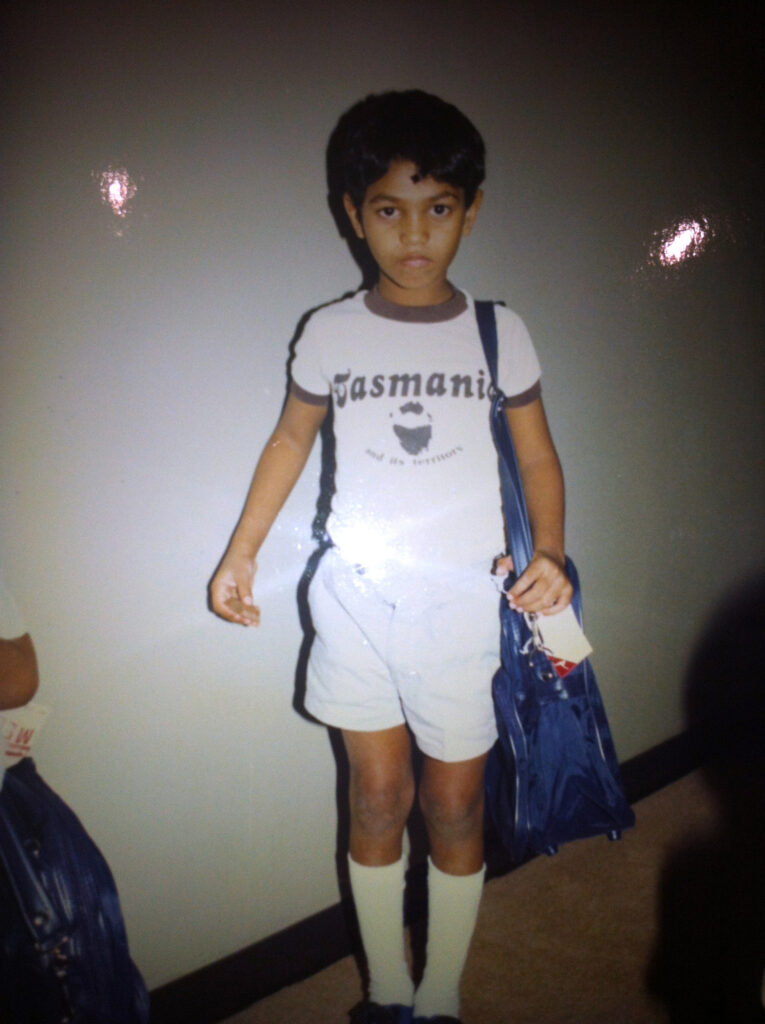
Nessman: I haven’t checked in yet, and the truth is that I’m a little scared to check in because I hope, and I’m sure many readers hope, that everything is somehow working out. But I fear that maybe it’s not. It was actually painful to listen to their phone conversation, her fury and his helpless attempts to calm her down.
Gelineau: I haven’t actually spoken with Saroo since the piece ran, though Ravi may have heard from Fatima. I know Saroo was planning to visit Fatima soon. I, too, am curious to know how that visit goes.
What kinds of stories do you usually work on? Do you often get the opportunity to report and write narrative?
Gelineau: I’m AP’s foreign correspondent in Sydney, so I basically cover anything interesting happening in Australia: politics, crime, crazy animal stories. I also do a lot of disaster coverage throughout the Asia-Pacific region (the Japan nuclear crisis and tsunami, the Christchurch, New Zealand, earthquake, etc). I love narratives above all and jump on any opportunity to write them. Before moving to Australia, I worked in the U.S. for the AP, and mainly covered crime, so crime narratives are my ultimate joy. I just find narratives exciting to write, exciting to read, and they always get the biggest reader response because they have the power to get people truly invested in a story. But even if you don’t have the capacity to write big, sweeping narratives every day (few of us have that luxury these days), there’s usually a way to incorporate at least a few narrative elements into many spot stories. Disaster coverage in particular lends itself to this. A few highly detailed paragraphs describing how the earthquake felt, sounded and looked can be really effective and connect the reader to the event. I try to do this whenever possible.
Nessman: As the South Asia bureau chief, I could be writing about politics one day, terror the next. While I don’t often get an opportunity to do long narrative, every few months something comes along that I get to have fun with.
Mary, what were the particular challenges of editing this piece?
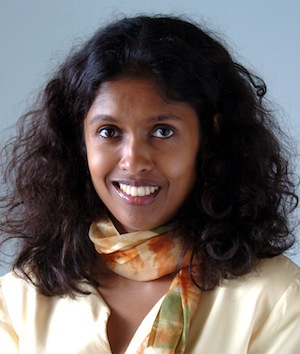
Rajkumar: Our first challenge (after verifying that the story was in fact true) was to get past the fact that it had been done before. Because it hadn’t, not really. Saroo had an agent, and he/they were pushing a certain version of the story, the isn’t-this-a-miracle aspect, the wonders of technology today, etc. That was not what we were interested in. Kristen and Ravi did a great job of going around the agent and getting to a far more complex story, based on a far more complex central relationship between the two main characters. The theme that emerged was the one you mentioned: While this story is extreme, none of us can ever go back home again, and growing up also means letting go.
Our next challenge was structure. We decided against three parts for several reasons. For one, the pace went slack. Also, we just didn’t have enough about Fatima. I was fascinated with the idea of taking her character past the loving mother utterly devoted to finding her son (which is of course there); I also wanted to know how her dreams were poured into him, in a way, and what it was like for his brother and sister to know they were never enough for their mother. (I love that cryptic quote from the brother when Saroo returns: “You will be happy now. Your son is back.” But the brother refused to talk with us, and we really didn’t have enough to go on. That actually connects with another challenge: the characterization of Fatima. We were afraid there would be a disconnect for readers between the saintly heroine of the first part and the hissing half-witch of the second, so we actually toned down some of the first. We also added more cultural context, because it really is key in understanding Fatima. I’m Indian myself, and a couple of other Indians have come up to me and told me how pitch-perfect that last scene is. And it is; it’s my favorite scene in the story. I’ve met that woman! Then there were of course the logistical challenges: finding a good time for us to talk across three time zones, having two reporters write the story, needing translators (which Ravi brilliantly and fortunately turned into an advantage with the last scene). I have to say that given the possible difficulties, it went very smoothly, and Ravi and Kristen managed to make the drafts close to seamless in terms of tone and voice.
Is the AP doing more long-form narrative? What’s the status of narrative there?
Rajkumar: The AP is often known for short and snappy, but in fact we have long had a team of national writers who do a lot of narrative work. In recent years, we have also been doing more of that kind of work on the international side. For example, Rukmini Callimachi, our West Africa bureau chief, was a Pulitzer finalist in 2009 in international reporting for a set of long-form investigative narratives about child trafficking in Africa. As fewer news outlets do international news, there is an opening for us to do a wide range of international stories, which certainly includes both investigative work and in-depth narratives, sometimes together. I believe the key for the AP is flexibility. We have so many different audiences across so many different formats, and we’re in a great position to explore various ways of telling stories.
From an editing perspective, what worked particularly well with this piece and is there anything about it that you’d like to see more reporters try?
Rajkumar: There’s a lot I really like about this story: the pace, as I mentioned, the voice, the wonderful details, the plot, the compassion. Maybe most of all, I like it that we told a story in a distinctive way. I think reporters at the AP and elsewhere sometimes fall into the standard patterns, where we automatically structure a story around theme and exposition. I would love for more reporters to try other things: a different voice, a different central focus, a different format. And I would love for more editors to encourage them, to give them the permission to go out on a limb, as well as the reassurance that they’ll be caught if they fall.
Kristen Gelineau joined The Associated Press in Seattle in 2002, and has worked in bureaus in Washington, Ohio and Virginia, covering politics, health, hurricanes, crime and courts. In 2008, she transferred to AP’s bureau in Sydney, where she specializes in disaster coverage across the Asia-Pacific region. She won APME’s feature writing award in 2006 and received an honorable mention in 2010. Ravi Nessman is the South Asia bureau chief for The Associated Press. He has been an AP foreign correspondent for 12 years, based in Africa, the Middle East and South Asia. He has won awards for his coverage of the Israeli-Palestinian conflict, the assassination of Benazir Bhutto in Pakistan, the final bloody months of the Sri Lankan civil war and India’s fight against polio. Mary Rajkumar is the international enterprise editor for The Associated Press. She has been a reporter or editor at newspapers including the Miami Herald, the San Jose Mercury News and the Oakland Tribune. Stories she edited have been named as Pulitzer finalists and won awards including the Loeb, the Pulliam, the Medill, the National Headliner and APME. Rajkumar grew up in Singapore and graduated with honors from Cambridge University and Stanford University.
